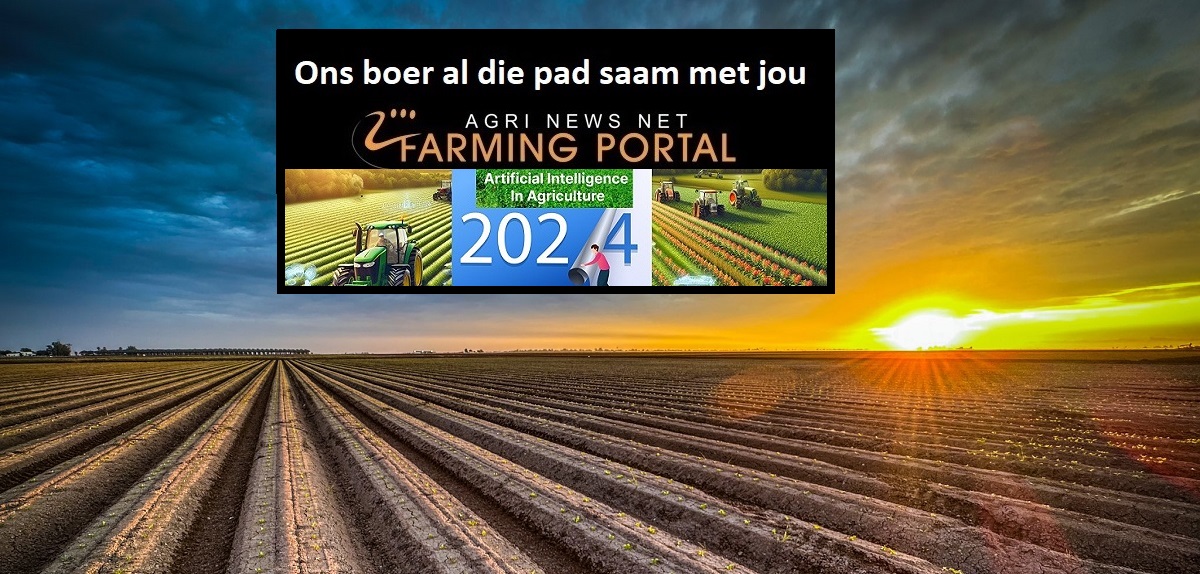This article summarizes the main developments since June 2024 and provides a short-term market outlook. The supply of mineral fertilizers is inextricably linked to costs of production; natural gas alongside phosphate rock and potassium ore are the key inputs to the most widely used nitrogen (N), phosphates (P) and potassium (K) fertilizers. According to the International Fertilizer Association, global fertilizer production increased substantially in 2023 following a decline in 2022; the highest increases were in urea production (up 6.0 percent year over year) and potassium (up 12.0 percent year over year). Preliminary 2024 estimates point to nitrogen1 (urea and ammonia) production remaining in line with 2023 levels, phosphates (monoammonium phosphate [MAP] and diammonium phosphate [DAP]) declining slightly, and potassium (muriate of potash and sulphate of potash) continuing to exhibit robust growth compared to 2023. Zooming in on the price of natural gas, the main feedstock for producing ammonia, which is a building block for all N fertilizers and of two of the most widely used P fertilizers (MAP and DAP) as well as of other nitrogen-phosphate-potassium (NPK) blends, 2024 to early November (cutoff date for the text) has displayed significantly lower daily volatility in pricing, according to the Dutch natural gas Title Transfer Facility (TTF) index. In 2024 to date, the TTF index stood at an average of EUR 32/megawatt hour, down EUR 8/megawatt hour compared to values recorded in the same JanuaryOctober interval of 2023. Lower natural gas price volatility favors fertilizer production and fertilizer supply predictability, as producers are likely to maintain factory utilization rates stable in normal macroeconomic conditions.
Prices The impacts of lower natural gas prices can most readily be seen in nitrogenous fertilizers, which on average were priced at USD 291/tonne in January–October 2024, down 10.0 percent from USD 321/tonne in the same interval of 2023. However, despite the reduction in prices of ammonia – a key input in manufacturing DAP and MAP – prices for phosphates in January– October 2024 stood at an average of USD 547/tonne, 1.0 percent higher than in the same time period in 2023. While not linked to natural gas prices, potassium fertilizers (muriate of potash [MOP] and sulphate of potash [SOP]) registered the most significant price reduction in 2024, averaging USD 272/tonne in the first ten months of 2024, down 29.0 percent over the same period in 2023 when the average price was USD 384/ tonne. Different nutrients are influenced by different market fundamentals and trade policies. While nitrogen and potassium prices declined significantly from their peaks observed in April and May 2022, phosphates remained at an elevated level due to several factors: trader barriers limiting exports from China, continuing countervailing duties on phosphate exports from Morocco into the United States of America, and structural readjusting of production matrices of some major producers so that triple-superphosphate (TSP) production is favored. TSP does not require expensive ammonia feedstock, unlike the more commonly used MAP and DAP do.
 Stronger Rand helps lower Fertilizer import prices.
Stronger Rand helps lower Fertilizer import prices.
In September 2024, fertilizer prices – as presented by a basket of nitrogen, phosphorus, and potassium price series – averaged USD 334/tonne; these prices can be compared to USD 815/tonne in April 2022, which was the most recent peak. In September 2024, 1 tonne of urea was sold for USD 293 (compared to USD 801 in March 2022), 1 tonne of DAP for USD 577 (compared to USD 1 132 in April 2022), and 1 tonne of MOP, for USD 252 (compared to USD 712 in April 2022). Global fertilizer trade Available trade data shows that in January–August 2024, fertilizer trade volumes amounted to 110 million tonnes, down 8.0 percent on the 120 million tonnes recorded in the same period in 2023; trade value totaled USD 42 billion, also down 17.0 percent on the USD 51 billion in January–August 2023. It is worth noting that the reduction in trade value reflects lower volumes, but it was also triggered by a price reduction of 10.0 percent for nitrogen and 29.0 percent for potassium, as discussed earlier. Seasonality and uncertainty of regional patterns make it difficult to project the volume that will be traded in the last four months of 2024, but nitrogen and potassium appear on track to reach and even exceed 2023 volumes, while phosphates will likely be lower. The total trade values outcome for 2024 will likely be driven by Brazil’s nitrogen purchases, which is coming into peak purchasing season in October–November with ow stocks, and by India’s phosphate imports, which have accelerated in the third quarter following a 50.0 percent year-over-year decrease recorded in the first half of 2024 compared to 2023. Fertilizer trade policies Trade policies, in particular tariffs and quotas, continue to shape fertilizer trade. Since the June 2024 edition of Food Outlook, several notable policies regarding fertilizer trade were introduced.
One such example is in Argentina where its tax for purchasing foreign currency was reduced, directly facilitating fertilizer imports. The move to lower the tax on foreign currency, by 10.0 percentage points to 7.5 percent, had been widely expected. Fertilizer market participants anticipated a reduction and cited it as a reason for subdued urea import purchases in Argentina in the preceding months. Earlier this year, Argentina announced the removal of urea and UAN tariffs that were 5.4 percent and 3.6 percent, respectively. Non-trade facilitating policies that were introduced include China’s suspending all new applications for urea export inspections on 7 June 2024 until further notice. The export curbs were implemented due to the surge in domestic urea prices and are expected to be maintained through the end of the year. The Russian Federation extended export quotas for fertilizers from 1 December 2024 to 31 May 2025. The quota will total about 19.2 million tonnes, which equals 11.2 million tonnes for nitrogen fertilizers and 8 million tonnes for compound fertilizers. The Russian Federation introduced the non-tariff export quotas for nitrogen and compound fertilizers on 1 December 2021, to rein in rising domestic food prices. Supply risks Potential further escalation in the Near East could affect supply of all three main fertilizers (N, P, K), affecting up to 27 million tonnes2 of nitrogenous, phosphatic and potassic fertilizers. Trade data shows that about 30.0 percent of global exports of urea originate in the region, including 17.0 percent of ammonia, 17.0 percent of DAP and MAP and 6.0 percent of potassium. The importers most affected by potential disruptions would be Latin American countries for urea and phosphates, Southeast Asia and South Asia for phosphates and potassium, and East Asia for ammonia. Depending on the spare capacity available elsewhere, importers might or might not be able to substitute these volumes readily or may have to do so at increased costs particularly due to longer voyage times. Short-term outlook (October-March) Nitrogen supply is expected to remain sufficient, with natural gas prices displaying significantly less volatility than in 2021–2023. In addition, in Nigeria urea capacity was expanded to over 1 million tonnes, and in the US Gulf ammonia capacity was increased to 1.15 million tonnes. In the Russian Federation, the new ammonia export terminal in Taman will soon be in commission and will add to existing supply. Natural gas prices constitute an upside risk, particularly for nitrates production in Europe. Demand-wise, Europe has been slow to buy urea and nitrates for the 2024–2025 season, partly because the weather has delayed application, but Europe is expected to step in to cover its needs before March.
At the same time, India is faced with low stocks and is expected to continue to tender for urea every six to eight weeks through the end of rabi season in April. Upside price pressure could occur if demand peaks in Europe and India coincide with purchasing in North and Latin America, especially since Chinese exports will remain very constrained. Phosphates supply remains strained; on one hand, plant maintenance in Saudi Arabia and the Russian Federation has overlapped and been prolonged, and on the other hand, there has been very robust demand in India; in the last six weeks, it has secured an additional 600 000 tonnes of DAP. India announced a generous retail price subsidy scheme for phosphates (13.0 percent increase) for rabi season and will continue to import heavily. Exports from China remain very modest and will likely become even tighter in the fourth quarter as China prioritizes domestic access, further straining global supply. Morocco continues to reshape its production capabilities, prioritizing triple superphosphate (TSP) production, which does not require ammonia feedstock, instead of the usual MAP and DAP; as a result, prices for DAP and MAP have increased as major markets, such as Brazil and the United States, prefer DAP and MAP to TSP. Still, affordability concerns, particularly in Brazil and subSaharan Africa, could likely curb some consumption and mitigate the tight supply to a certain extent. Potassium supply is ample, with trade in 2024 slated to surpass 2023 levels. In 2023 already, potash trade expanded by 7 million tonnes compared to 2022. New capacity additions in Lao People’s Democratic Republic and higher production and exports in Canada will continue to improve availability and affordability of potash. Pricing is likely to remain stable, though some pockets of upcoming seasonal demand from palm oil plantations in Southeast Asia might cause temporary regional price spikes.















